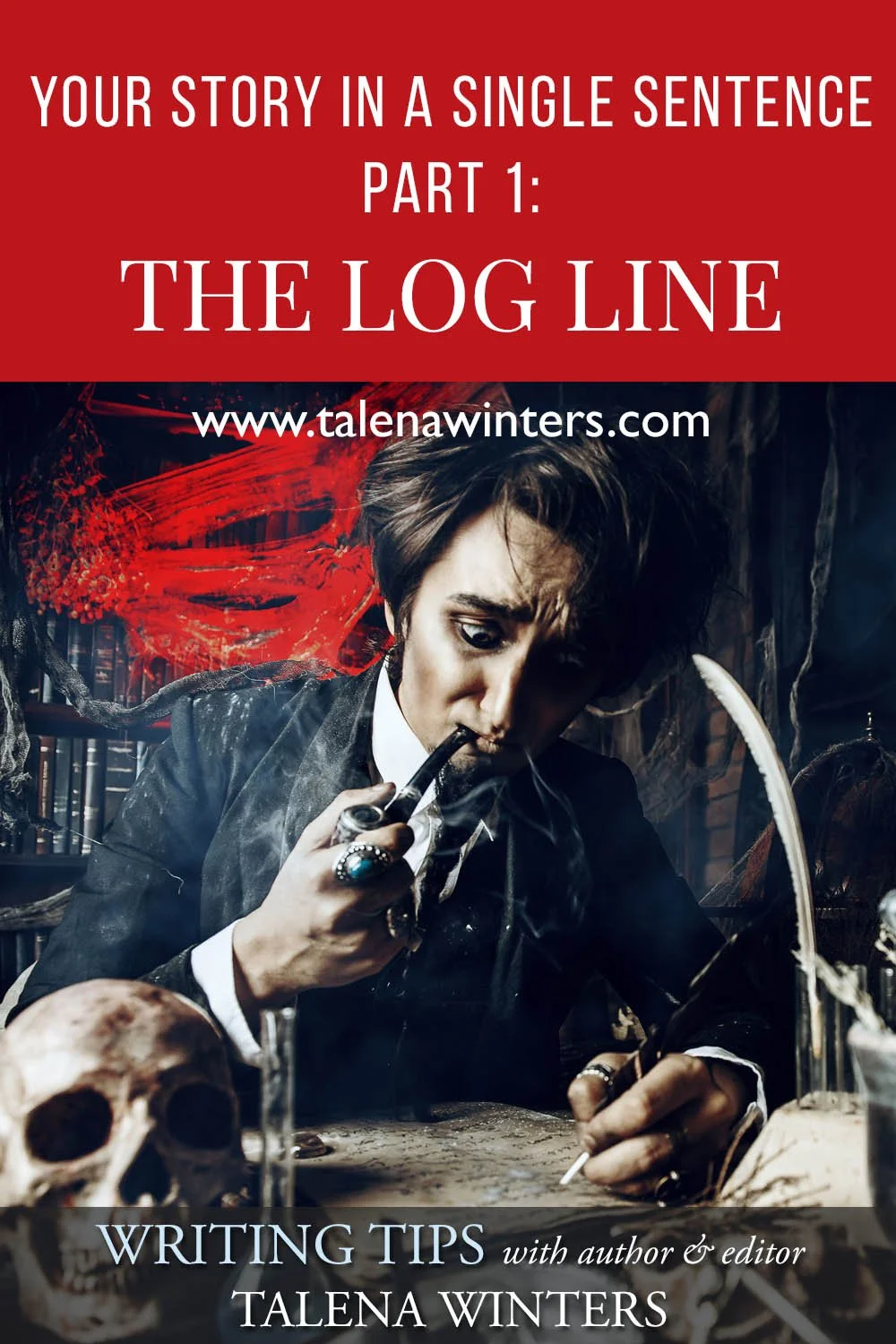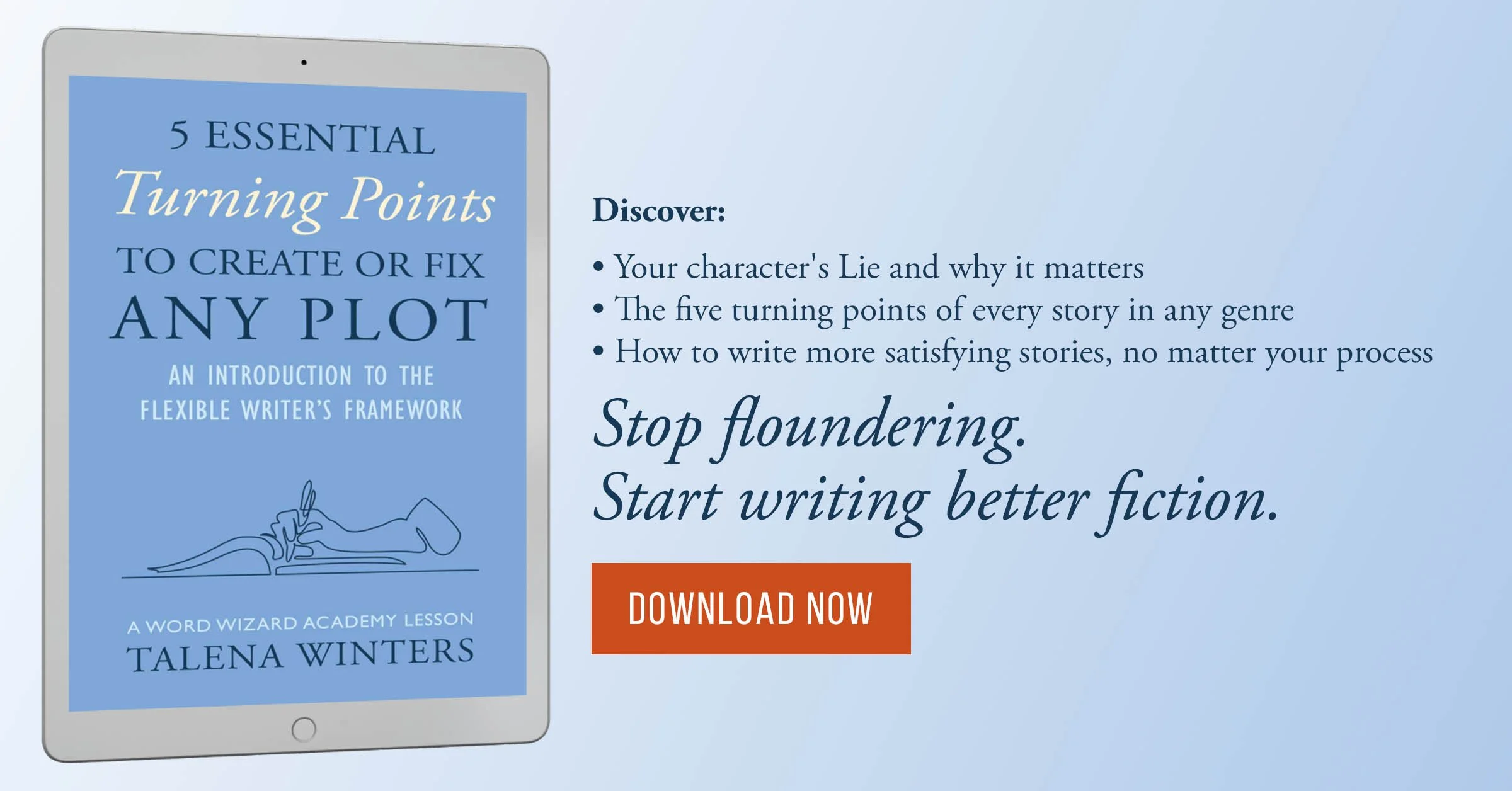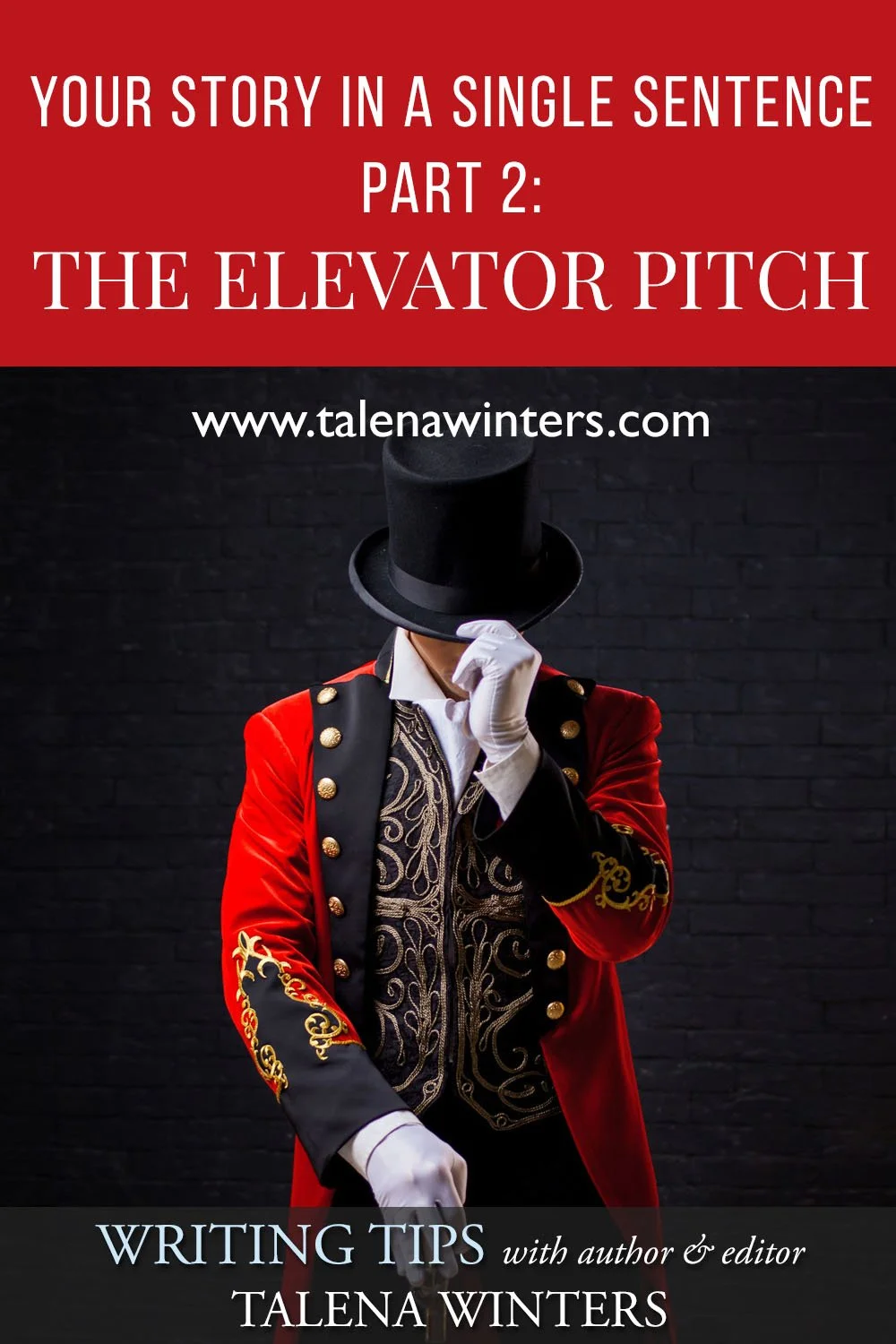Your Story in a Single Sentence Part 1: The Log Line
I recently went to one of my favourite writing events of the year, the When Words Collide readers and writers conference in Calgary, Alberta, Canada. There is always so much energy and enthusiasm and generally supportive love at this event. I love hearing what other writers are up to, what they’re passionate about, and why they are excited about writing.
Nothing separates the experienced from the inexperienced writers like how they answer the question, “So, what’s your story about?”
There are usually three types of responses to this question:
A ten-minute diatribe describing all the clans, religions, and characters in the book, which may or may not tell me anything that would make me want to read it.
A few sentences about the book that might be hesitant and halting, and probably doesn’t describe enough about the book to make me want to read it.
An awesome one- or two-sentence description that makes me drooling to read their book, except darnit, they haven’t finished writing it yet!
We’ve all been here, haven’t we? I have. I’ve been asked this and had that slight moment of panic trying to describe all the amazing elements of my super-epic fantasy novel before the eyes of my listener glaze over. Fortunately, there is a better way.
Today, I’m going to teach you how to answer this question in 60 seconds or less. (The answering will take 60 seconds, not reading this post and learning how to do this, sorry.)
The best part is that not only will you have an answer when Aunt Gertrude asks what you’re working on right now, you’ll have a single-sentence guideline to keep you on track while you’re writing.
The first of these (your answer for Aunt Gertrude) is called an Elevator Pitch. The second (the guideline) is called a Log Line. They are not identical, but they are similar. Since the Elevator Pitch (and your blurb, and your entire plot) is built from your Log Line, we’re going to start there in this post and cover the rest in future posts.
Here’s a quick overview by video, if you like that sort of thing:
What Is a Log Line?
A log line is the most basic form of plot structure you can get, embodying all the important elements of your story in a single sentence. Even the pantsiest of pantsers benefit from working out a log line before they begin writing to help them keep on track when the “new and shiny” threatens to derail the story they set out to tell.
Plotters can use it to guide them as they work through their outline.
For both groups, working out a log line will tell you in advance whether you have all your plot points in place and have worked out a conflict that is strong enough to carry an entire book.
So let’s cook up a log line, shall we?
The Basic Ingredients
There are several formulas you can use, but this one is my favourite:
Protagonist with a need PLUS antagonist with a need PLUS stakes, an ironic twist and a ticking clock.
There are some parts of this that are optional, depending on genre. But the full log line formula will give you the most compelling of plots to keep your story moving.
So, what do these all mean? Let’s play mad scientist for a while a build it from scratch.
The basic parts of a Log Line.
Bare-Bones Basics: Protagonist vs. Antagonist
At it’s most stripped-down, you need these two elements:
Protagonist with a need
Antagonist with a need
Here are some things to remember while you are working out a log line:
Don’t name the antagonist and protagonist in your log line. Use descriptive nouns and adjectives to tell us who they are.
The needs of the protagonist and antagonist should conflict with each other, because without conflict, you don’t have a story. You have a news bulletin. (More help with conflict here.)
The antagonist does not need to be a person. It can be a force, illness, natural disaster, belief system, organization, whatever. However, even in this case, there will be character stand-ins for this antagonist which may or may not be mentioned in your log line.
Bad:
A cat and dog live in harmony in the home of their doting owner.
Good:
A self-absorbed gluttonous cat competes with the dim-witted dog—and anyone else who comes along—for all the love and food that their eccentric, socially-awkward bachelor owner can supply.
You may have recognized the premise of the comic strip Garfield in my log line example. For a comic strip and maybe even some children’s books or television sitcoms from the sixties (I’m looking at you, Gilligan’s Island), this bare-bones log line may be enough. But for most things (including individual episodes on those TV shows), you need more. You need stakes.
Fleshing It Out: Stakes
The stakes are what terrible thing will happen if the protagonist doesn’t get what he/she wants. The best stakes always involve death, whether it is literal (a person or character dying or the world ending so everyone dies) or figurative (death of a relationship, reputation, dream, organization, etc.).
Okay:
A successful surgeon falsely accused of killing his wife tries to prove his innocence.
(Protagonist: the surgeon. Need: prove his innocence. Antagonist (implied): the system that wrongfully convicted him.)
Better:
A successful surgeon falsely accused of killing his wife tries to prove his innocence with a death sentence hanging over his head.
(This adds stakes—literal death if he fails.)
We’ll come back to this log line later.
Adding Interesting Features: The Twist
The twist is something ironic or intriguing built into the story that provides conflict and something unexpected.
For example, the twist in Finding Nemo is that a control freak gets saddled with a free spirit with short-term memory loss while he is searching for his missing son whom he drove away in the first place. The twist is inherent in the conflict between the two personalities, as well as in the fact that by clinging too tightly, what he most feared came upon him and created the plot conflict.
The twist in the Hunger Games is that in order to survive and save her sister, Katniss is expected to kill other innocent children, including the boy to whom she and her sister owe their lives.
The twist in The Bourne Identity is that the super-soldier the C.I.A. created loses his memory and turns against them, both targeting and becoming the target of the organization that created him—a single person with limited resources against a well-supplied, well-oiled superpower.
Tightening the Nerves: The Ticking Clock
A ticking clock is a deadline by which the goal must be accomplished or the stakes will come to pass.
This is an optional element depending on genre, but adding a ticking clock will always increase the urgency and tension in your story. This is why it is often used in thrillers and crime drama.
In The Bourne Identity, Jason Bourne must outsmart the C.I.A. and get all the brilliant people who want to protect their secret off his back before they succeed in killing him.
In A Quiet Place, a dystopian America where the population has been decimated by aliens that hunt by sound, the mother of the family is pregnant. And babies aren’t born quietly.
In The Fugitive, the log line I began under “Stakes”, Surgeon Richard Kimball must prove his innocence before he is caught and sent to the electric chair.
Here are some examples of ticking clocks in other genres:
In romance, will the two people admit their true feelings for each other before they no longer have a chance to make their relationship successful?
In a children’s story, will the mischief be resolved before some worse consequence occurs?
In a women’s fiction, will the character change the way she must before the consequences of not changing come to pass?
In a fantasy, will the great evil be averted before the world is destroyed?
Bringing Your Plot to Life
Now you see how all the elements work together, let’s look at a few sample log lines. See if you can spot all the elements. Note that you do not have to have all the elements in the order of the diagram above, as long as they are all present.
The Fugitive:
A successful surgeon falsely accused of killing his wife tries to prove his innocence with a death sentence hanging over his head while being pursued by a relentless veteran U.S. Marshall who is just doing his job.
In this version of the log line, the antagonist (the Big Boss Troublemaker, or BBT, to borrow a term from author Kristen Lamb) is still the system. However, Deputy U.S. Marshall Sam Gerard and his team are the stand-ins for that system and continually propel the plot forward.
When the Antichrist is delivered to earth as a baby, an angel and a demon team up to prevent the apocalypse before he turns eleven years old—if only they could figure out where they put him.
A pre-teen girl rebels against her culture’s rigid expectations of womanhood by escaping to a magical land of childhood fantasies with a boy who never grows up, but discovers that remaining a child forever also has a price.
Take a look at your story and boil it down to these essential elements. Next time, we’ll talk about how to use the Log Line to create an elevator pitch—the thirty-second sentence you have to grab someone who is walking by your table at a book signing, or the space between floors when you walk into an elevator with Steven Spielberg.
Do you have log line questions? Are you excited about how the log line is going to help you nail down your story? Let me know! Leave a comment below, and please share this post with your friends.
You might also find my free plot structure resource helpful:
I also offer personalized help at any time, and would love to work with you to make your project magical! Check out my editing services for more about that.
Happy writing!
Talena Winters is a freelance developmental editor, independent author, magazine writer, and tea and silver lining addict. She specializes in helping struggling self-published fiction and memoir authors unlock their inner writing wizards and unleash story magic. See her editing services here.




An appropriately-crafted log line may not be a magic wand to fix plot problems, but it comes close. Check out these three common causes for “project flame-out” to help you fix your story.